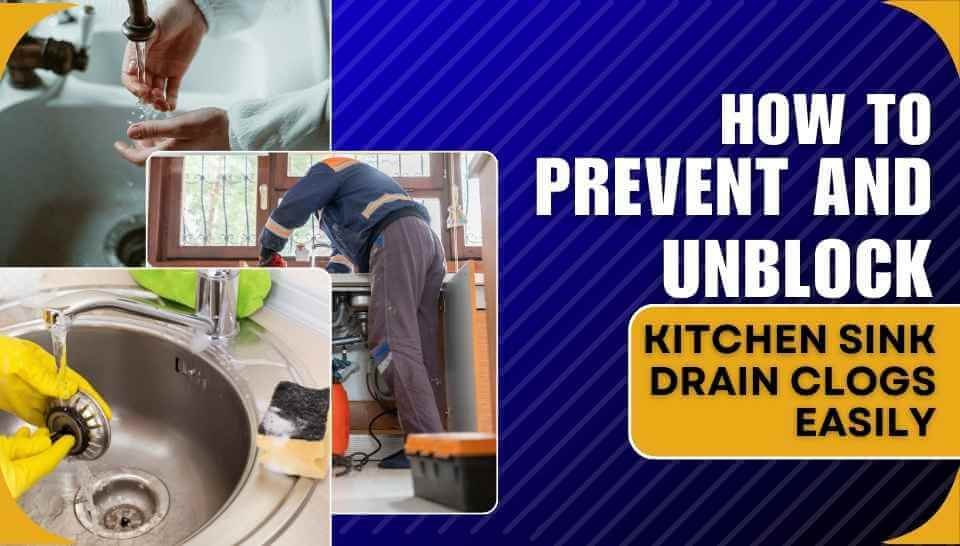
A kitchen sink drain plays a vital role in every home. It works daily, from washing dishes to preparing meals. You might not notice it—until it gets blocked. A kitchen drain clogged can bring household tasks to a halt and create stress. The good news is that the right approach can help with prevention and quick solutions. This guide offers simple steps to help your sink drain well. It also tells you when to call a professional for drain cleaning.
Why Kitchen Sink Drains Get Clogged
Food scraps, grease, and soap can clog your kitchen drain. Over time, these materials clog the kitchen sink plumbing. This reduces water flow and can eventually cause a blockage. Households with a garbage disposal often think it can handle anything. But fibrous foods, oils, and coffee grounds can cause problems.
Simple Ways to Prevent Kitchen Sink Drain Clogs
Prevention is always easier than repair. Here are a few simple yet effective practices:
- Dispose of grease properly: Avoid pouring oil or fats into the sink, as they solidify in the drain.
- Use a strainer: Place a mesh strainer over the drain to catch food scraps before they enter the pipes.
- Run hot water: After washing dishes, run hot water for a few seconds to flush out small particles.
- Limit disposal waste: In a kitchen sink, don’t grind bones, shells, or stringy veggies.
These small changes help the kitchen sink drain parts last longer and reduce clogs.
How to Unblock Kitchen Sink Drains Quickly
Even with good care, blockages can happen. When facing a kitchen drain clogged, the following solutions work in most cases:
1. Use Boiling Water
Pour a kettle of boiling water down the drain to melt grease and loosen light blockages.
2. Baking Soda and Vinegar
This natural method works well for mild clogs. Pour half a cup of baking soda followed by vinegar, wait 15 minutes, then flush with hot water. It’s one of the safest clogged kitchen sink solutions.
3. Plunger Technique
A plunger can dislodge food particles stuck in the kitchen sink plumbing drain. Make sure there is enough water to cover the plunger’s cup for better suction.
4. Manual Cleaning
For tough clogs, you might need to take out and clean parts of the kitchen sink drain, like the trap. Place a bucket underneath to catch any water before unscrewing the pipe.
When to Call Professional Drain Cleaning Services
Sometimes a blockage is too severe for home methods. Clogs, bad smells, and frequent backups mean you need professional drain cleaning. A skilled team uses special tools to clear kitchen drains fast and provide lasting results. Regular maintenance checks also reduce the risk of costly repairs.
Case Study: A Stubborn Kitchen Drain Blockage
A homeowner recently faced a stubborn kitchen drain. It kept clogging, even after many attempts to plunge it. After inspection, grease buildup was found deep inside the kitchen sink plumbing drain. Our team used high-pressure water jetting to clear the pipe completely. The customer was surprised by how fast the water flowed again. Now, they follow our tips to prevent future issues.
Conclusion
A smooth-running kitchen sink drain makes daily life easier. Preventing clogs is easy. Just follow some simple steps at home. Most clogs can be avoided or fixed quickly this way. However, when issues persist, relying on professional drain cleaning services ensures lasting results.
FAQs
Q1: How to fix blocked sink pipes?
Blocked pipes can often be fixed by using a plunger or a mix of baking soda and vinegar. For more serious blockages, dismantling the trap and cleaning it is necessary. If these methods fail, a professional service should be contacted.
Q2: How to clean a kitchen sink drain naturally?
Pour baking soda down the drain, then add vinegar. This is a natural cleaning method. After letting it sit for 10–15 minutes, flush with hot water. This helps remove odours and light build-up without harsh chemicals.


